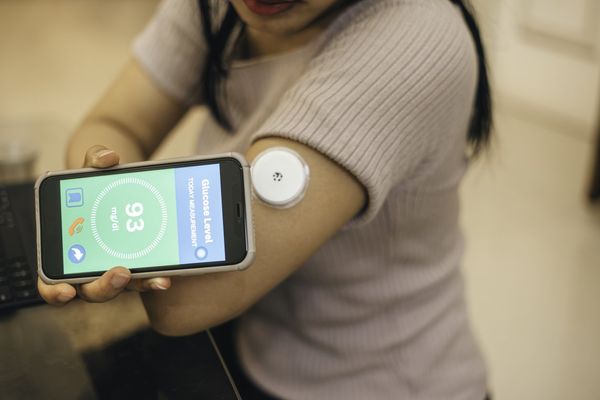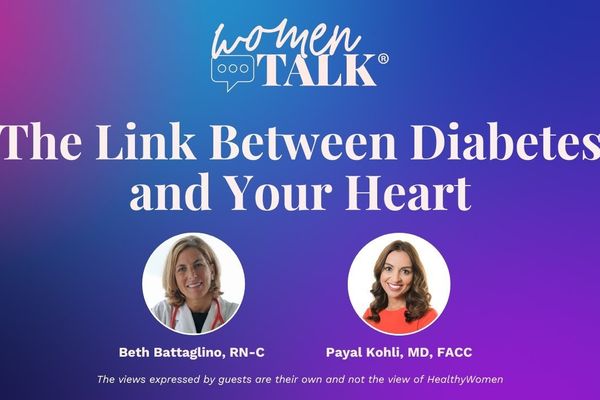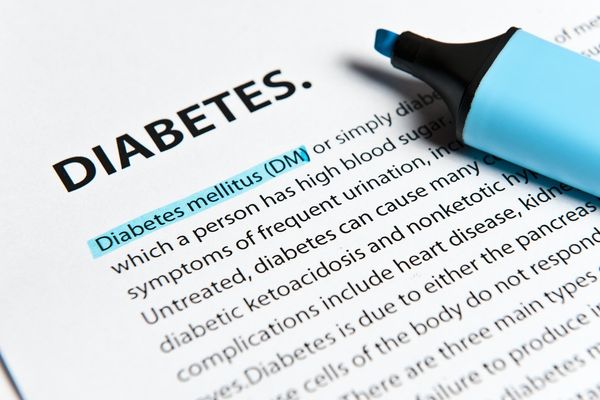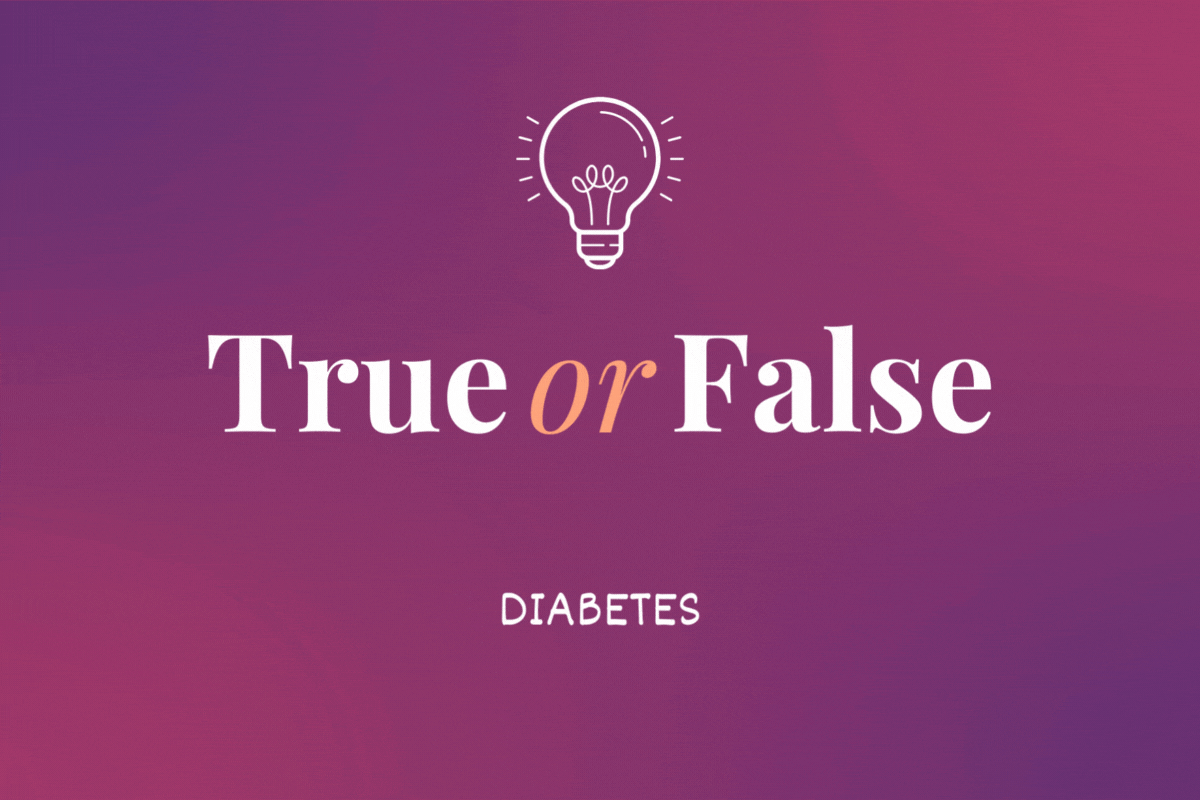In 1994, iconic singer Patti LaBelle lived every performer's worst nightmare — she collapsed on stage in front of thousands of fans.
LaBelle attributed her fall to exhaustion until she learned she had Type 2 diabetes. In spite of watching close family members struggle with the disease — her mother had her legs amputated and her aunt lost her sight — LaBelle was blindsided by her diagnosis. It was a wakeup call, one that changed her life forever.
About one in nine women in the United States has diabetes, a disease that occurs when blood sugar levels can't be properly controlled and get too high. Of the different types of diabetes, Type 2 is the most common. It's also a major risk factor for heart disease.
Adults with diabetes are twice as likely to have a heart attack or stroke, and research suggests women — who are normally less likely than men to develop heart problems — may experience an excess risk of cardiovascular disease when they have diabetes.
"Type 2 diabetes is considered one of the major risk factors for coronary artery disease and stroke," said Dr. Nieca Goldberg, medical director for the Women's Heart Program at New York University's Langone Health and a member of HealthyWomen's Women's Health Advisory Council.
Type 2 diabetes and heart disease risk
With Type 2 diabetes, the body doesn't make enough insulin or use insulin well. Since insulin helps regulate blood sugar levels in the body, not having enough insulin means a person with diabetes won't be able to use blood sugar in their bloodstream or store it for energy.
Symptoms of Type 2 diabetes often develop slowly or are undetectable, so some people may not know they have the disease until it causes another health problem, like heart disease.
High blood sugar from Type 2 diabetes can cause damage to blood vessels, including those that supply oxygen and blood to the heart, as well as the nerves that control it. According to Goldberg, this damage puts your blood vessels at risk for buildup of artery-clogging plaque.
Other risk factors for cardiovascular disease
Since people with Type 2 diabetes already have a greater chance of developing heart disease, it's important to understand additional risk factors. These include:
- Family history "Family history is very important, particularly if your mom was less than 60 when she had her first heart symptoms or your dad was less than 50, or if you have a first-line family member like a brother or sister with the same criteria," Goldberg said.
- Cholesterol Your body produces two kinds of cholesterol, LDL (low-density lipoprotein) and HDL (high-density lipoprotein). High levels of "bad" LDL cholesterol lead to the build up of plaque in your arteries. Low levels of "good" HDL cholesterol are also a risk factor for heart disease, because HDL cholesterol helps remove excess cholesterol from the body.
- Insulin resistance Insulin resistance means cells in your fat, muscles and liver don't respond well to insulin, and therefore aren't easily able to take up glucose from your blood. Insulin resistance has been shown to increase risk for both Type 2 diabetes and cardiovascular disease.
- Obesity Obesity is associated with multiple factors that increase risk of cardiovascular disease. Some of these factors are unhealthy cholesterol levels, high blood pressure and Type 2 diabetes.
- Less-than-healthy behaviors Smoking and a lack of physical activity are known risk factors for heart disease, as is poor blood sugar management.
- Gender-specific factors Some risk factors for cardiovascular disease are unique to women. They include pregnancy-related factors such as gestational diabetes, preeclampsia and preterm birth, which Goldberg says can signify heart disease around midlife, as well as polycystic ovary syndrome and early menopause.
Disparities among populations
There are significant disparities among different populations related to Type 2 diabetes and heart disease. Type 2 diabetes develops more frequently in certain racial and ethnic groups (American Indian/Alaska Native, Hispanic, non-Hispanic Black, and Asian American). Women with Type 2 diabetes are at greater risk of developing heart disease than men with diabetes.
There's also a correlation between diabetes and level of education, with diabetes being most common among people with a high school education or less. And both racial and socioeconomic inequalities exist when it comes to diabetes care, including access to health insurance and self-monitoring supplies like glucose test strips.
Goldberg acknowledges these disparities and believes practitioners can address them by providing targeted outreach and education. "Particular efforts have to be made in communities where rates of disease are the highest," Goldberg said. "We have to think outside the box."
Lowering your risk of Type 2 diabetes and heart disease
Diet and exercise are key to reducing your risk of both diabetes and heart disease, Goldberg said. For LaBelle, this meant bringing her own pots and pans on tour so she could cook healthy meals for herself.
When it comes to exercise, make sure you get your heart rate up. "Aerobic exercise not only increases levels of good cholesterol while lowering triglycerides and LDL cholesterol, but it also improves glucose utilization by our cells, increasing insulin sensitivity," Goldberg explained. This means aerobic exercise is good for your heart and your blood sugar levels, lowering your risk of both cardiovascular disease and diabetes.
For people who already have diabetes, preventing cardiovascular disease is about more than just managing blood sugar. "It's not only about getting the glucose controlled, it's about addressing risk factors in addition to diabetes," Goldberg said. "It's a global approach."
This resource was created with support from Know Diabetes by Heart™, a joint initiative of the American Heart Association and American Diabetes Association.
- What's Your Heart Disease Risk? Important Numbers to Know - HealthyWomen ›
- What Is POTS? - HealthyWomen ›
- The Intersection of Heart Disease, Diabetes and Stroke - HealthyWomen ›
- Are You at Risk for Heart Disease? - HealthyWomen ›
- Are You At Risk of Developing Diabetes? - HealthyWomen ›
- The Intersection of Heart Disease, Diabetes and Stroke - HealthyWomen ›
- The Link Between Diabetes and Your Heart - HealthyWomen ›
- Diabetes and Heart Attack Risk: What's the Connection? - HealthyWomen ›







